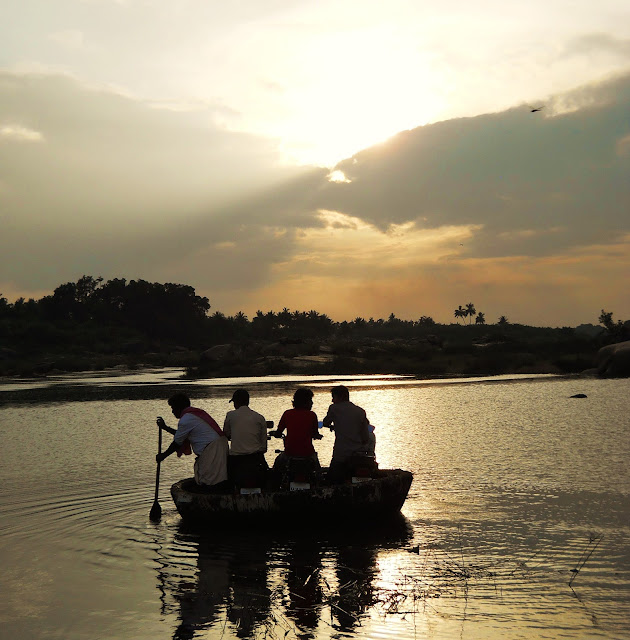Coracle crossing the Tungabhadra River, late in the afternoon. Coracles have been a means of conveyance in the Hampi area since prehistoric times, and even in the present they seem to have certain advantages over traditional boats. They're cheap, and so lightweight that they can be carried balanced on a person's head like a great big hat. Yet, with such low displacement combined with such a large amount of surface area in contact with the water, they can carry surprisingly heavy loads. The craft in this picture is holding three motorcycles and four people...what must be well over a thousand pounds in a vessel that looked like it weighed less than thirty. Coracles are used quite extensively in the Hampi region, sometimes just for tourist boat rides, but also because, at the moment, there's no bridge that connects Hampi with the settlements just on the other side of the Tungabhadra, such as Anegondi and Virupapur Gaddi. Note the dragonfly flying through the upper righthand corner of the picture.
The little, sleepy, laid back village of Anegondi (Anegondi meaning something like "elephant enclosure") is situated across the Tungabhadra river from the remains of the city of Vijayanagara. Though the ruins in Anegondi are less spectacular, the village has a longer history than the much more well known and frequented historical site on the opposite side of the river. It is also on the other side of the Tungabhadra that the rocky, central Karnataka boulderlands rise to their most spectacular heights.

